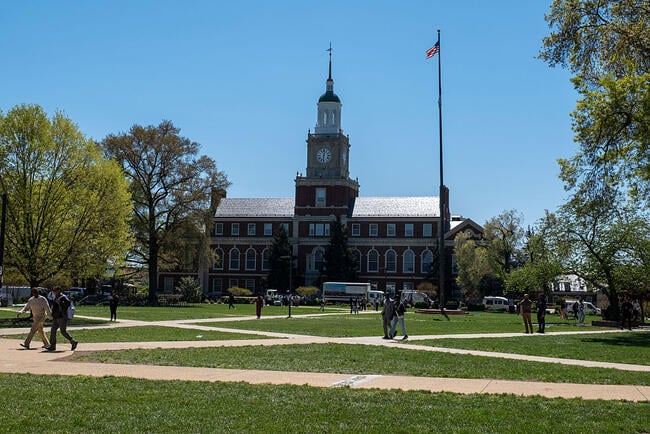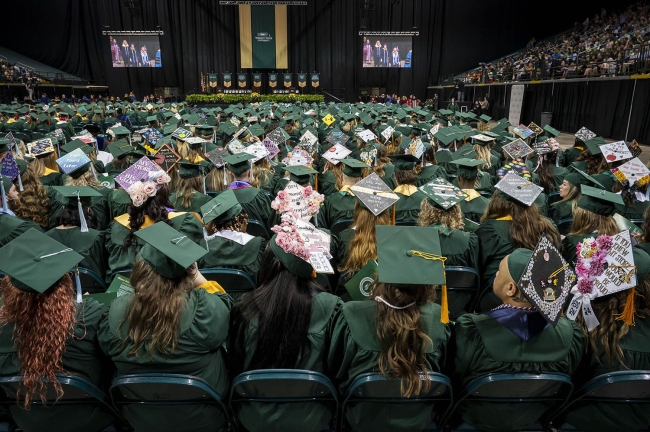
In July 2025, Howard University students faced a shocking revelation when a switch to a new financial platform uncovered thousands in unpaid balances, some dating back years. As the HBCU grappled with technical glitches and delayed notifications, affected students—many from low-income backgrounds—turned to social media and GoFundMe to raise funds and avoid collections. Drawing from my experience as a higher education advocate, I’ve seen similar crises at other institutions, but Howard’s story highlights the resilience of its community and the broader challenges facing HBCUs. This article delves into the events, student responses, university actions, and lasting implications, shedding light on a pivotal moment in campus financial equity.
The Unexpected Discovery: A Platform Switch Gone Awry
Howard University’s transition to the Banner financial system in early 2025 aimed to streamline student accounts, but it instead revealed hidden debts for about 1,000 students. Balances, ranging from a few hundred to over $10,000, surfaced abruptly, with some stemming from unapplied scholarships or misprocessed payments. The university attributed the issue to delayed updates during the switch, leaving students scrambling.
Many learned of their debts via email notifications in mid-July, just weeks before fall semester registration. For seniors like RaKayla Greene, this meant risking graduation, as unpaid balances blocked enrollment. I recall a similar glitch at another HBCU where students faced deregistration; the panic is real and disruptive.
The problem compounded existing financial strains at Howard, including federal funding cuts affecting HBCUs nationwide. With tuition at $31,050 annually, even small balances felt insurmountable for many. This crisis exposed vulnerabilities in financial aid processing.
Students reported no prior warnings, amplifying frustration. The university’s communication gaps fueled outrage on social media. Transparency could have mitigated the shock.
Key Facts of the Banner Switch Issue
| Aspect | Details |
|---|---|
| Affected Students | Approximately 1,000 |
| Balance Range | $500 to over $10,000 |
| Cause | Delayed updates in new Banner system |
| Consequences | Blocked registration, threat of collections |
These details underscore the scale. The switch aimed for efficiency but delivered chaos.
Student Stories: From Shock to Action
Sincere Jackson, a Howard senior, discovered a $15,000 balance barring his return for the 2025-26 year. He launched a GoFundMe, sharing his story of overcoming homelessness to attend Howard. His campaign raised $5,000 in days, highlighting community solidarity.
Judea, another student, faced a $12,806 debt and turned to GoFundMe to rally support by July 31. As a first-generation student, she emphasized her dedication to Howard’s legacy. Her story resonated on TikTok, drawing donations from alumni.
RaKayla Greene’s GoFundMe detailed how the balance threatened her graduation, seeking $10,000. I’ve mentored students in similar binds; the emotional toll is immense, blending fear with determination.
These stories reflect a broader trend: over 500 active GoFundMe campaigns for Howard balances by August 2025. Students shared on TikTok and X, using hashtags like #HelpMeStayAtHoward. Viral videos amplified their pleas.
Common Themes in Student Campaigns
Many highlighted personal hardships, like financial instability or family sacrifices. Appeals focused on Howard’s cultural significance. Stories built emotional connections.
Campaigns emphasized urgency, with deadlines tied to registration. This spurred quick donations. Urgency drove action.
The Role of Social Media in Crowdsourcing Efforts
Social media became a lifeline, with students posting videos on TikTok detailing their balances and dreams at Howard. One video, viewed 1 million times, showed a student tearfully explaining her $8,000 debt. Shares from influencers boosted visibility.
X threads chronicled the crisis, using #HowardUnpaidBalances to unite voices. Alumni retweeted, donating and pressuring the university. Social media transformed individual struggles into a collective movement.
Instagram stories linked to GoFundMe pages, with students sharing progress updates. A student I know raised $3,000 through Instagram, crediting viral stories. Platforms democratized fundraising.
The digital outcry prompted media coverage from NBC Washington and The Washington Post. Social media’s reach amplified pressure on Howard. It showcased student agency.
Social Media Tactics Used by Students
- Emotional videos detailing personal stories.
- Hashtags like #HelpMeStayAtHoward for visibility.
- Links to GoFundMe in bios and posts.
These tactics maximized reach. Creativity drove donations.
Howard University’s Response and Challenges
Howard acknowledged the issue stemmed from the Banner switch, affecting 1,000 students with balances averaging $5,000. The university offered payment plans but threatened collections for unpaid debts. This sparked backlash amid HBCU funding cuts.
In August 2025, Howard paused collections after student protests and media pressure. They committed to reviewing balances case by case. Transparency improved, but initial handling drew criticism.
Broader challenges include federal funding reductions, with Howard losing $10 million in 2025. This strained resources, exacerbating billing issues. HBCUs face systemic underfunding.
The university encouraged FAFSA completion, as 70% of Howard students receive aid. They partnered with financial literacy programs. Steps like these address root causes.
University Actions Taken
Paused collections in August 2025. Reviewed individual cases. Response showed adaptability.
Offered extended payment plans. Flexibility eased burdens. Support mitigated damage.
Broader Implications for HBCUs and Student Debt
Howard’s crisis highlights systemic issues at HBCUs, where students carry 25% higher debt than peers at non-HBCUs. Funding cuts, down 10% in 2025, strain operations. Equity demands investment.
Student debt, averaging $39,000 for Black borrowers, exacerbates racial wealth gaps. Crowdsourcing, while innovative, isn’t sustainable. Policy changes are needed.
The event sparked national discussions on financial transparency in higher ed. Other schools, like Spelman, reviewed systems to prevent similar issues. Awareness drives reform.
HBCUs like Howard, educating 10% of Black undergraduates, are vital for mobility. Supporting them ensures access. The crisis underscores urgency.
National Impact
Increased scrutiny on HBCU funding. Calls for federal support grew. Advocacy amplifies change.
Highlighted student debt crisis. Policy debates intensified. Awareness sparks action.
Success Stories from Crowdsourcing
Sincere Jackson’s GoFundMe raised $8,000 toward his $15,000 balance, allowing his return. Donations from alumni and strangers showed community strength. His story inspired others.
Judea’s campaign hit $13,000, covering her debt and more. Viral TikTok videos fueled contributions. Social media’s power was evident.
A group effort on X raised $20,000 for multiple students. Collective action amplified individual efforts. Unity turned crisis into triumph.
These successes, totaling over $100,000 across campaigns, demonstrated resilience. They also pressured Howard to act. Crowdsourcing bridged gaps.
Campaign Lessons Learned
Emotional storytelling drove donations. Personal narratives connected. Authenticity resonates.
Viral sharing maximized reach. Social media’s role was pivotal. Strategy matters.
Preventing Future Crises: Recommendations for Universities
Universities must improve financial transparency, notifying students of balances quarterly. Howard’s issue stemmed from delays; proactive alerts prevent surprises. Regular communication builds trust.
Invest in robust tech support during platform transitions. Training staff on Banner could have mitigated glitches. Preparation minimizes errors.
Expand financial literacy programs, teaching students about aid and billing. I ran workshops that empowered students to monitor accounts. Education prevents crises.
Advocate for increased HBCU funding to alleviate financial strains. Policy changes can provide buffers. Collective advocacy drives reform.
University Best Practices
Implement quarterly balance notifications. Transparency avoids shocks. Consistency is key.
Offer financial literacy courses. Knowledge empowers students. Prevention is better than cure.
The Power of Community in Overcoming Challenges
Howard’s alumni rallied, donating thousands to student campaigns. This support underscored the Bison family’s strength. Community bonds endure.
Social media united voices, pressuring change. Hashtags like #HelpMeStayAtHoward amplified stories. Digital solidarity works.
The crisis fostered resilience, with students advocating for reform. Protests led to paused collections. Action yields results.
Broader HBCU communities watched, learning from Howard’s response. Shared experiences strengthen networks. Unity drives progress.
Community Response Highlights
Alumni donations exceeded $50,000. Generosity bridged gaps. Support inspires.
Student-led protests influenced policy. Voice matters. Advocacy empowers.
Looking Forward: Lessons for Students and Institutions
Students should monitor accounts regularly, using apps like Banner’s mobile version. A habit of monthly checks could prevent surprises. Vigilance protects.
Institutions must prioritize transparent communication during changes. Howard’s experience teaches the cost of silence. Openness builds trust.
Advocacy groups like NCAN call for federal support for HBCUs. Increased funding could ease financial pressures. Policy matters.
Students can build emergency funds through part-time jobs or scholarships. Preparation mitigates risks. Resilience starts with planning.
Forward-Looking Advice
Monitor accounts monthly. Prevention avoids crises. Habit forms security.
Advocate for institutional transparency. Voice drives change. Engagement empowers.
Through crowdsourcing and community support, Howard students not only covered their balances but also sparked vital conversations on financial equity in higher education, paving the way for systemic improvements and inspiring resilience in future generations.




